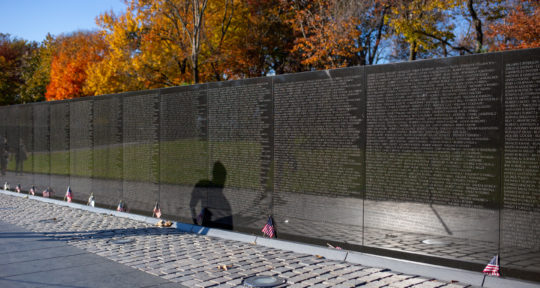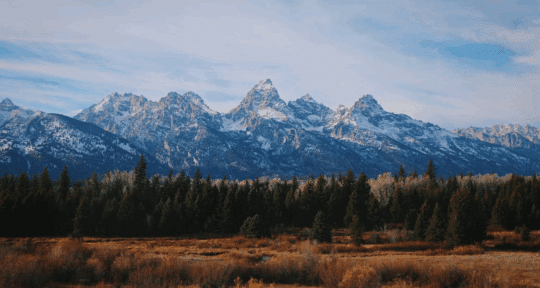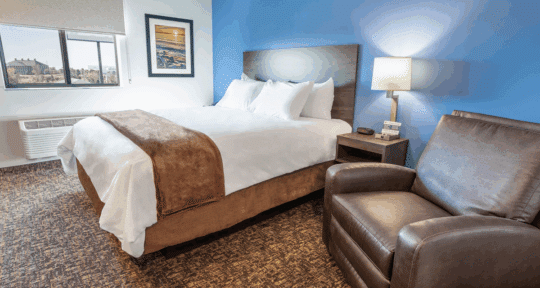After driving through the center of Winslow, Arizona, on Route 66—and stopping briefly at the iconic Standin’ on the Corner Park—I leave the small downtown area and immediately approach La Posada Hotel, housed in a sprawling Mission Revival building straight from another era. The hotel and its meticulously landscaped gardens are an impressive sight, even considering that this was originally the back of the property; the front faced the tracks of the Santa Fe Railroad.
While many of the vestiges of the early 20th century’s golden age of train travel have since been torn down or repurposed, La Posada stands out in 2020 as one of the few places in the U.S. where you can still get a taste of that experience.
The first restaurant chain
In the 1870s, a railroad freight agent named Fred Harvey couldn’t help but notice that the food served at train stations often was of extremely poor quality. Harvey convinced the Atchison, Topeka & Santa Fe Railway (AT&SF) to let him establish cafes inside train stations, where passengers could quickly disembark and get a decent meal. He promised a high-quality dining experience that would be the same in Topeka, Kansas, as it was in Gallup, New Mexico—and so the Harvey House was born.
Considered the first restaurant chain in the United States, Harvey Houses were notable both for the standardized food quality and for its Harvey Girls—young women of “good character” who served as waitresses and ambassadors in the restaurants. A 1946 musical called The Harvey Girls, starring Judy Garland and adapted from a novel with the same name, only added to the allure of the more than 100,000 women who held these positions from the 1870s through the 1950s.


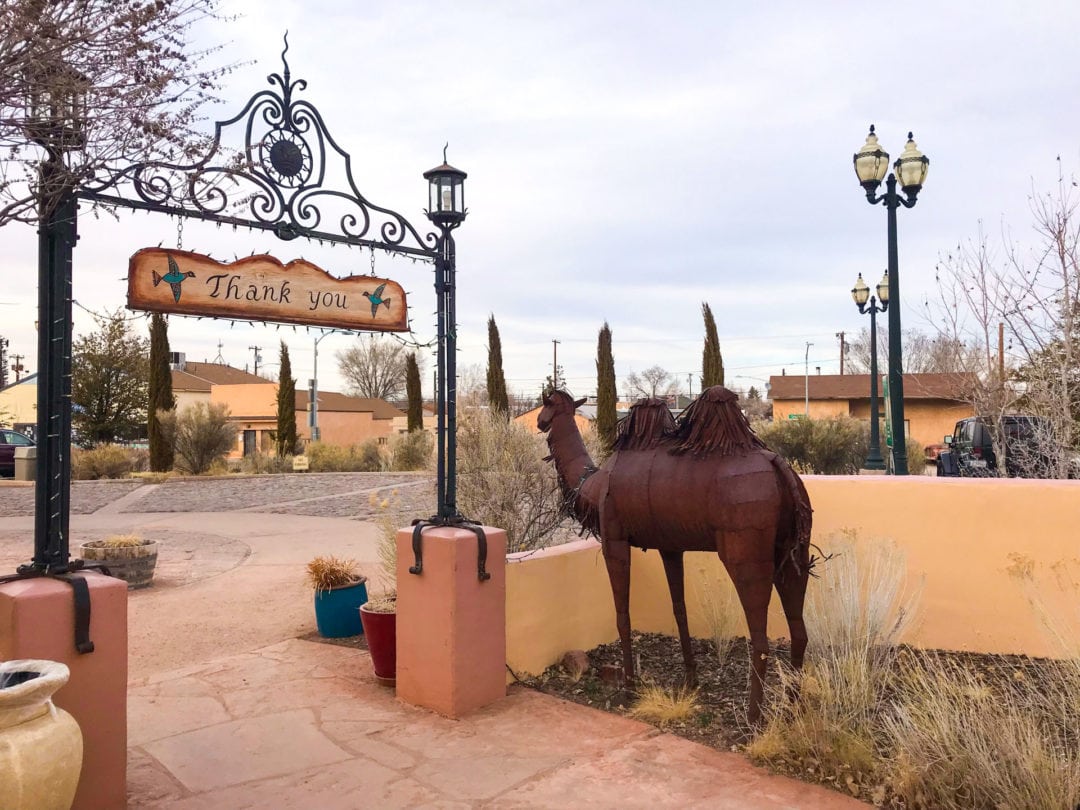
As tourism to the American West was increasing, Harvey began adding hotels at various stations along the AT&SF. Though Harvey died in 1901, his family continued his work, which included opening La Posada in Winslow. Construction began in the late 1920s, and the total budget for construction and landscaping was estimated to be around $2 million (around $40 million today). Mary Elizabeth Jane Coulter, who had served as an architect for the Harvey company since 1905, designed the hotel’s external structures as well as its interiors (including the furniture), gardens, housekeeping staff uniforms, and dinner china.
Saving La Posada
Opened in 1930, La Posada is often referred to as the “Last Great Railroad Hotel” in the American West. Colter also considered it her masterpiece. Between 1930 and 1957, La Posada was the premier destination in northern Arizona. Among its many famous guests, the hotel counted Amelia Earhart, Albert Einstein, Franklin D. Roosevelt, Shirley Temple, Howard Hughes, Mary Pickford, and Frank Sinatra.
The hotel closed to the public in 1957, and its one-of-a-kind Colter-designed furnishings were sold at auction in 1959. The property was converted into the headquarters of the Santa Fe Railway. “It had been gutted and turned into offices, so very few people even recognized that it was Mary Coulter’s masterpiece,” says Allan Affeldt, La Posada’s current owner.
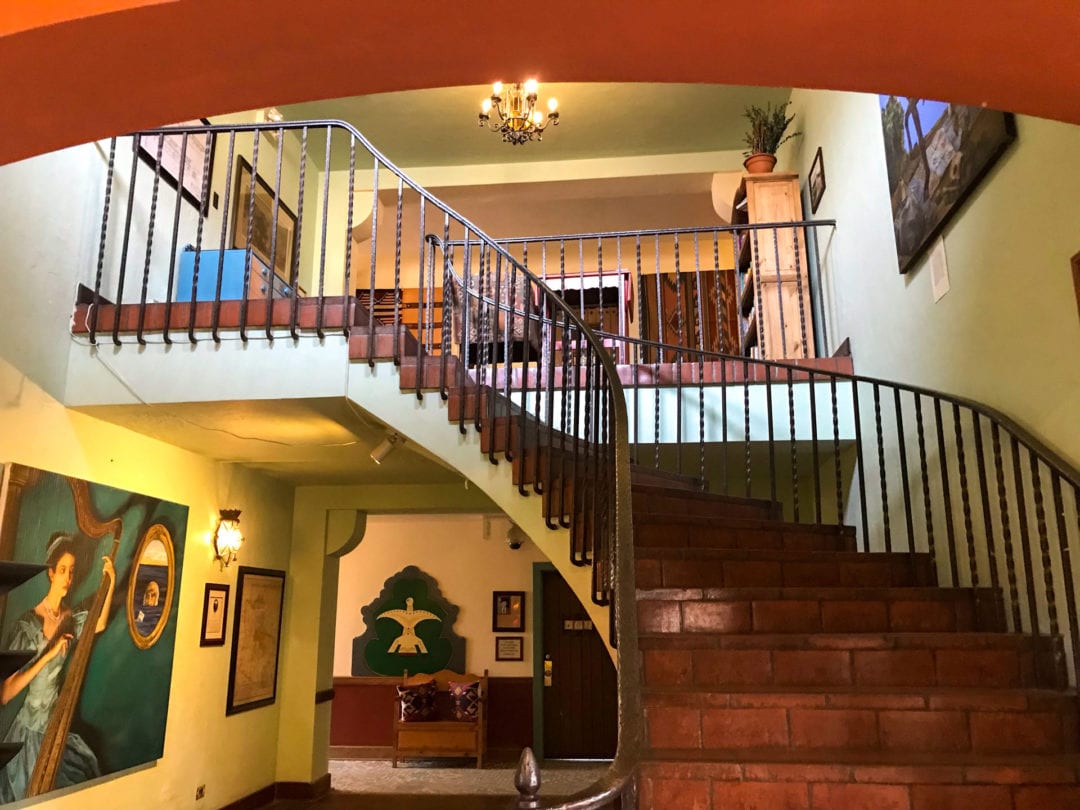
Then, in 1983, the Santa Fe Railway announced plans to demolish the historic hotel. Affeldt, who is a member of the National Trust for Historic Preservation, recognized that one of the most important buildings in the country that was about to be lost forever. Though La Posada was technically never for sale, Affeldt was able to purchase it from the Santa Fe Railway in 1997, after three years of negotiations. “This is a way of educating Americans about our architectural heritage and what happens to it in a disposable culture like ours,” he says.
On April 1, 1997, Affeldt and his wife, artist Tina Mion, moved into the hotel and began the still-ongoing process of restoring it to its former glory. They were able to reopen as a hotel later that year and continued to restore it, one room at a time.
In a stroke of luck, the railway office had put up drop ceilings in parts of the building, preserving some of the original hand-painted art on beams in the former ballroom. In 2000, Affeldt and Mion opened the Turquoise Room in the former location of the Harvey House restaurant.
La Posada today
I had the chance to stay at La Posada in February 2020, making it my final hotel visit before the COVID-19 pandemic hit. I enjoyed an incredibly thorough and thoughtful 3-hour tour of the property with Peggy from the Winslow Harvey Girls, an organization of local volunteers who dress up in the iconic black-and-white uniforms and serve as ambassadors for both La Posada and the town of Winslow.
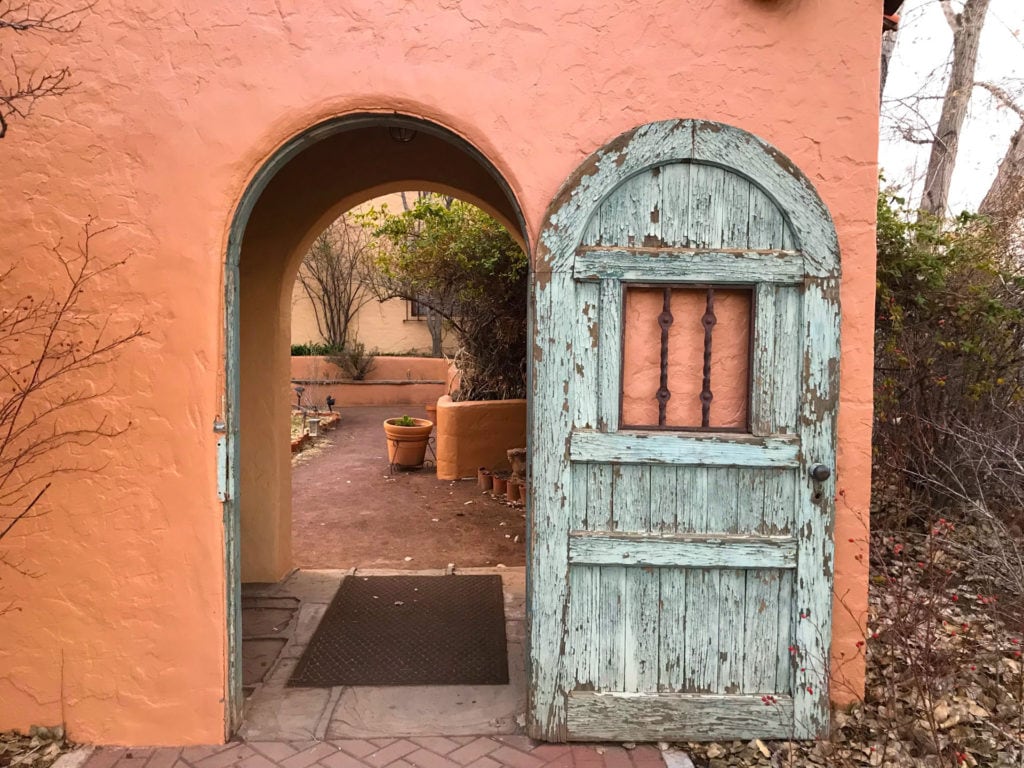
Over the next two days, I spent several more hours exploring the hotel and its grounds. In addition to operating as a hotel and restaurant once again, La Posada also functions as a museum, art gallery, and local retail space. Each section of the building is unique and filled with historic folk art furniture that Affeldt purchased from La Fonda in Santa Fe, another one of Colter’s hotels. The walls of the hotel feature numerous works by Mion, a contemporary artist whose work is also displayed in places like the National Portrait Gallery in Washington, D.C.
Prior to the pandemic, Affeldt says that La Posada typically had a year-round occupancy of around 90 percent. “For most of the year, we’re completely full every single day,” he explains. “Outside of national parks or even in a major city, that’s just unheard of. I think it’s because the building is pretty exceptional and we attract such a wide variety of travelers—they come from everywhere.”
Though most of its guests today arrive by car, La Posada still functions as Winslow’s Amtrak train station. Passengers can board and disembark in the same spot that the hotel’s first guests used nearly a century ago, though tickets are no longer sold in the building.
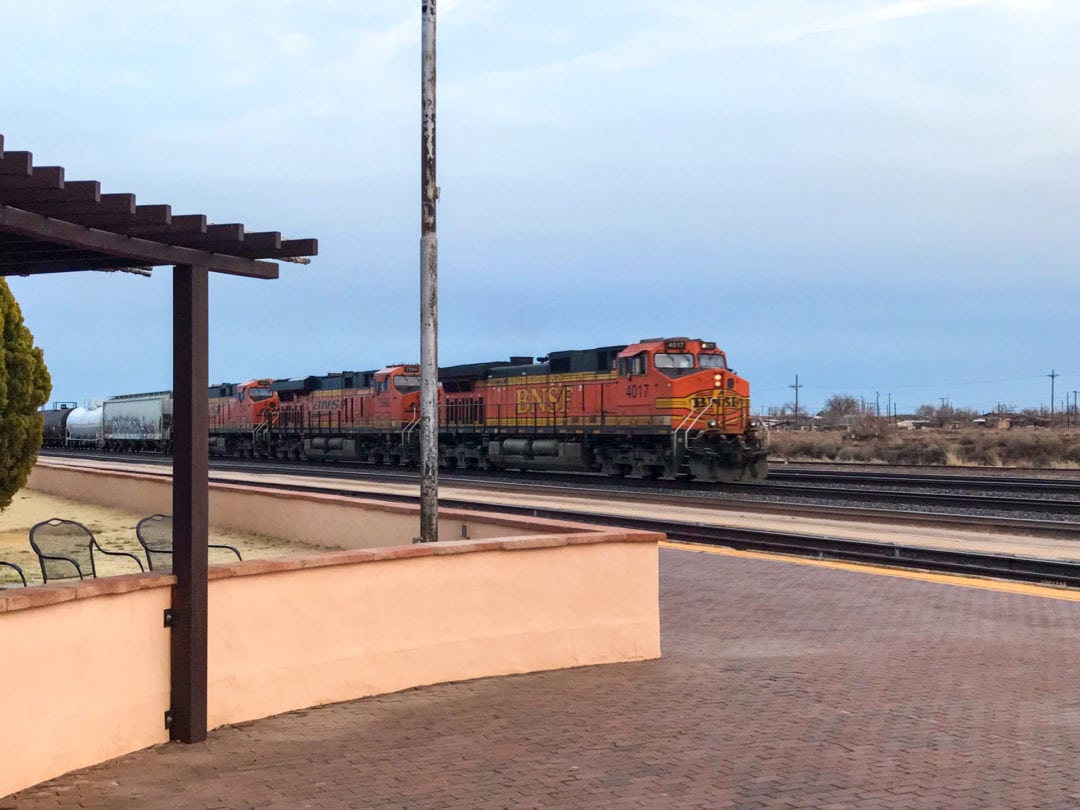
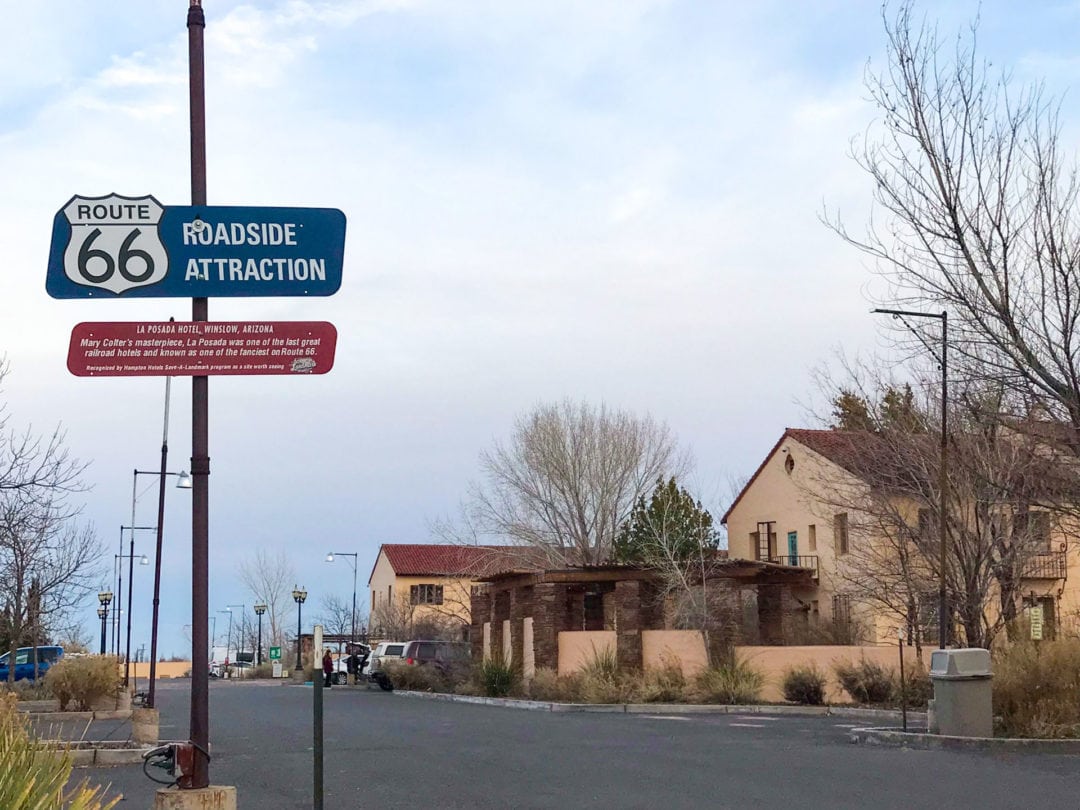
Trains still pass by the hotel throughout the day (though they primarily carry freight now), and guests can have a drink on the outdoor terrace to see the locomotives up-close. It’s a short walk from the original train station, which now houses a museum operated by the Winslow Arts Trust.
“There’s nothing like [La Posada] in the Southwest—this huge Spanish castle that’s sort of out of time,” Affeldt says. “We have a tremendous amount of repeat customer loyalty; people who come back year after year after year, sometimes several times a year, and it becomes their oasis.”
If you go
After closing at the beginning of the COVID-19 pandemic, La Posada is once again open and welcoming visitors while following a strict set of hygiene and safety standards.



